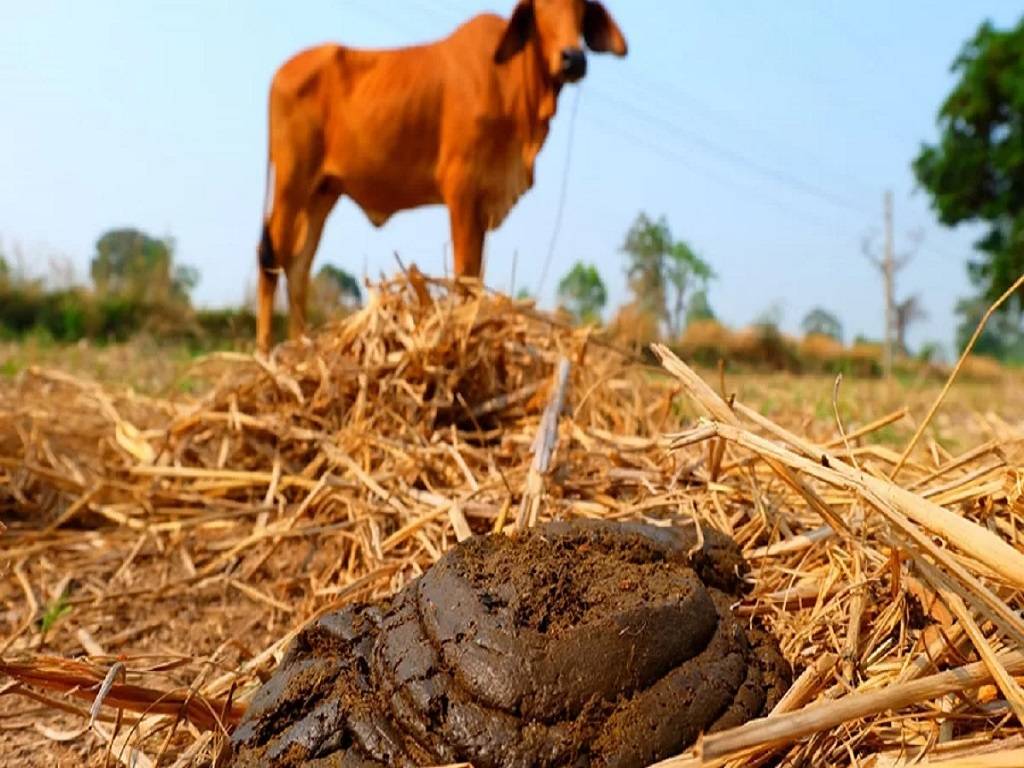
Fertilization is a tried-and-true method for getting decorative and food plants to grow, blossom and fruit to their full potential. Dung is one of the oldest fertilizer methods, and utilizing cow manure in a home garden is rather simple. Other benefits include high nutritional levels and extensive availability but use with caution.
Cow dung includes three important plant nutrients: nitrogen, phosphorus, and potassium. Although there is some natural variation among cow dung, the levels in fresh cow manure with bedding or litter are around 11% nitrogen, 4% phosphorus, and 10% potassium, and the nutrients become available to plants at a modest rate. Fresh cow dung with bedding or litter has a high-water content — 86 percent — and so helps to maintain the soil uniformly moist throughout the growing season.
The fact that cow dung is easy to find adds to its benefits. Many dairy producers would give out free manure to anyone who will cart it away. Even when payment is required, it is usually only a minor amount enough to fill a truck's bed. However, when purchasing cow dung, keep in mind that there is a significant difference between fresh and old manure, both of which are freely accessible. Both are acceptable for usage, but they must be handled and utilized differently.
What Advantages Does Cow Dung Have?
For optimal plant growth, three essential elements from cow dung are required. nitrogen, phosphorus, and potassium. According to research, cow dung contains around 3% nitrogen, 2% phosphorus, and 1% potassium. But not all cow dung has the same concentration of these elements.
Additionally, because cow manure includes advantageous microorganisms, these nutrients may be transformed into forms that are simple for plants to absorb. By gradually absorbing these nutrients into the soil, plants may benefit from them for much longer periods. The high moisture content of fresh cow dung, which allows for improved root aeration, should also be mentioned.
Cow dung plasters may be seen in many Indian houses. Cow dung is the most effective all-natural disinfectant, according to a study. Fresh cow dung paste is frequently seen all over the ground in Indian villages. Cow dung mixed with lime is also used to cover the walls of cob homes.
Additional Uses for Cow Dung
Ingredient of paper:
Cow dung cake, which has a high fiber content, may be utilized to produce papers of excellent quality. Cow excrement fibers are pressed into this paper to create it. The paper can then be made into a product and sold. This technique also makes use of cow manure.
Utilizing Cow Dung Cakes as Disinfectants:
It has been demonstrated that cow dung cake smoke has disinfecting effects. Consequently, cow dung is purposefully employed as an insect repellent, mostly to ward off mosquitoes. Additionally, to clean floors and walls in rural regions, cow dung cake is frequently used. Science research is still determining its potential as a disinfectant than other elements.
Cow dung cake as fuel and biogas are two further uses.
The best fuel is this one. In rural villages, cow excrement is frequently collected, dried, and used as fuel. About 55% of the biogas is methane, 30% is carbon dioxide, and the other components are hydrogen and nitrogen. All accumulated cow manure is used to create biogas. It is created by the anaerobic decomposition of cow manure. It is easy to make biogas from cow manure. Make a biodigester, then provide water while keeping it apart. Using cow dung indeed offers a fresh way to recycle trash and foster a greener world.
Precautions
By spreading cow dung on vegetable beds, the disease can be spread to people. Avoid spreading new manure after growing vegetables to reduce the chance of infection by letting the manure mature in the soil for about six months before planting anything edible there. Fresh manure should also not be used on ornamental plants since it contains a lot of nitrogen, which can burn plant tissue, make plants more appealing to pests than usual, and spread live weed seeds throughout the garden.
















